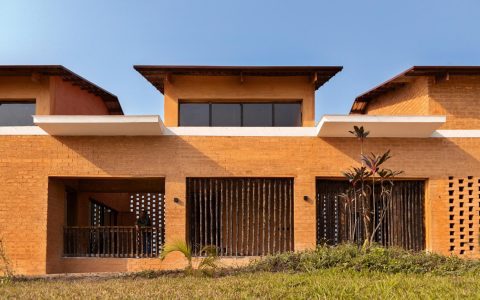Tropical Brutalist architecture merges the raw, monumental aesthetic of Brutalism with the lush, organic environments of the tropics.
Key Characteristics:
- Concrete Construction: Extensive use of exposed concrete, often textured or patterned.
- Climate Adaptation: Designs incorporate natural ventilation, shading, and water management to combat heat and humidity.
- Lush Integration: Buildings are often integrated with tropical vegetation, creating a symbiotic relationship between the built and natural environments.
- Bold Forms: Employs large, geometric shapes and repetitive modular elements.
- Emphasis on Texture: Rough, tactile surfaces and varied material finishes.
Design Strategies:
- Sun Shading: Overhangs, louvers, and deep-set windows to minimize direct sunlight.
- Natural Ventilation: Open layouts and strategic placement of openings to promote airflow.
- Rainwater Harvesting: Integrated systems for collecting and utilizing rainwater.
- Local Materials: Use of locally sourced materials such as bamboo, timber, and stone.
Notable Examples:
- Buildings in Southeast Asia, South America, and Africa that showcase Brutalist principles adapted to tropical climates.





